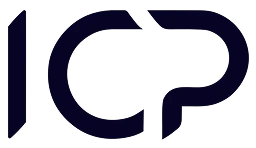Scrum project management
Scrum is a popular project management methodology that emphasizes flexibility, collaboration, and constant communication.

Tell our team about your needs and we will customize the tool as part of your chosen package!
Scrum is a popular project management methodology that emphasizes flexibility, collaboration, and constant communication. Unlike traditional methods, which often involve lengthy planning periods and rigidly defined roles, scrum relies on small, self-organized teams to get work done. This approach can be especially effective for complex projects that require frequent adjustments. In a scrum environment, team members are constantly in contact with each other, sharing information and making sure everyone is on the same page. This allows for quick course corrections when necessary and prevents problems from getting out of hand. As a result, scrum can help to ensure that projects are completed on time and within budget.
How to control the development of a new product? How do react to changes in the client’s expectations? How do plan actions to minimize the risk of failure? Effective project management is quite a challenge. Fortunately, the agile methods that enjoy increasing popularity, such as Scrum, come to our aid. At first, it was used mainly to develop IT products. Today, it is used well beyond IT. What does Scrum consist of and does it work?
What is Scrum project management?
Scrum is the most widespread of so-called agile project methodologies based on the Agile Manifesto. According to the rules of the Scrum methodology, product development comes in short, consecutive stages called "Sprints." Iterative process control over the project allows for efficient and innovative creation of the product and its maximum match to the client's expectations.
A bit of history
The first mentions of the Scrum methodology appeared as early as 1986. Its main assumptions were presented by Hirotaka Takeuchi and Ikujiro Nonaka in the article "The New Product Development Game," published by Harward Business Review. In the '90s, Scrum has developed thanks to people like Ken Schwaber and Jeff Sutherland, who in 1995, during the conference in Austin, Texas, jointly presented a work dedicated to the methodology. Six years later, the same people presented the most known to-date manifesto connected with the IT work methodology – The Agile Manifesto.
Sprints, or work in processes
According to the Scrum methodology, called frameworks by its creators, the project teams work in Sprint processes, which usually take from 1 to 4 weeks. Sprints are iterations consisting of repeating respective elements cyclically and fixedly during the entire process of the project. The effect of each process should be the delivery of a subsequent version of the product with implemented changes that are visible to the user.
Sprints stages
Each sprint begins with Sprint Planning, during which prioritized tasks are sent for each process. An inherent element of sprints is so-called daily scrums, i.e., everyday team meetings during which the work progress is checked and decisions on further actions are made. The next stage is Sprint Review, i.e., checking the increment of the product and feedback. The sprint ends with a retrospective, i.e., a summary which aims to help in improving the subsequent iterations.
Roles in Scrum Project Management
Individual characters play a key role in the Scrum methodology. These are Product Owner – a person representing the client, responsible for making decisions linked to product development and project duration, The Scrum Master creates the right environment for work and the team, motivating employees in daily, short meetings.
Advantages of the Scrum methodology
Implementing the agile methodology may provide a plethora of benefits that would otherwise be unavailable.
the project with traditional methods. Above all, Scrum allows you to:
- changes regularly in the project during its performance—both in existing and future functionalities.
- fully monitor the product's development - each Sprint concludes with the release of a new version of the product for the client to test and make changes for implementation in the next Sprint.
- perform the project in the fastest and most efficient way thanks to corrections made regularly and, hence, better adjust the product to the client's expectations.
- change the scope of the project and even close it at any time—for example, in the situation of a reduced budget,
- minimize the expenses connected to formalities—there is no need to create comprehensive project documentation.
- increase the team's morale—thanks to self-organization, the project participants have more room for experiments, and their relations are based on colleagueship, which translates to better efficiency.
Potential threats
The Scrum method is not free of flaws. Among its potential threats, the most often mentioned one is the risk of project proliferation, which is related to the possibility of introducing changes and adding new functionalities. This, in turn, may lead to unexpectedly exceeding the budget. In effect, the end-product, though comprehensive, may also not meet the initially assumed tasks.
Scrum project management is a type of Agile methodology that is popular in the software development industry. The key principles of Scrum are transparency, inspection, and adaptation. These principles are achieved through a set of roles, events, and artifacts. One of the most important aspects of Scrum is an investment in training. This investment ensures that team members have the knowledge and skills necessary to be successful. While Scrum can be challenging to implement, the investment in training is essential for its success. With the right training, Scrum can help your team to be more agile and adaptable, leading to more successful projects.
When is it worth working with Scrum?
When it comes to project management, there are a lot of different approaches that you can take. Scrum is one of the more popular options these days, and it can be very effective in the right circumstances. So when is it worth working with Scrum?
Generally speaking, Scrum is best suited to projects that are complex and subject to change. That's because scrum is built around the idea of constant adaptability and evolution. With scrum, everything is focused on the product being developed, and the team works in short "sprints" to make incremental improvements.
This approach can be very helpful in situations where the requirements are constantly changing or where there's a lot of uncertainty about what needs to be done. Because scrum is so flexible, it's easy to make changes as new information arises, which can help keep the project on track.
As more companies adopt scrum methods, the teal scrum organization is likely to become more popular. When choosing a scrum organization, it is important to consider the needs of your team and company.
Of course, scrum isn't the right fit for every project. It can be more time-consuming and expensive than other approaches, and it requires a high level of communication and cooperation from everyone involved. But if you're working on a complex project that is likely to change over time, scrum project management may be worth considering.
Also read

How to create an effective project plan?
A project plan is a key element of every successful project. Without a proper plan, projects can become chaotic and difficult to manage.
Try IC Project in your company Our team is ready to help!

Create a free account and test with no obligation




